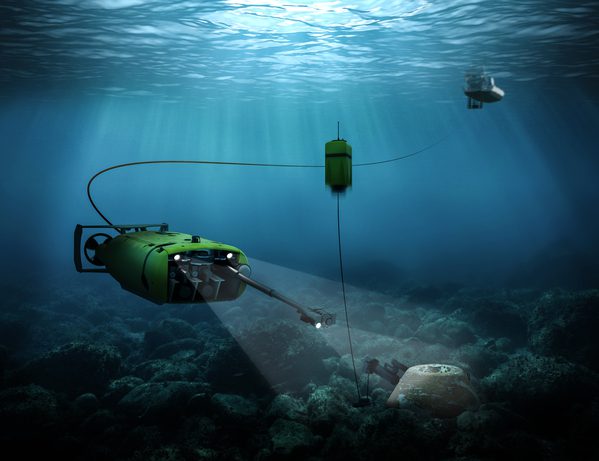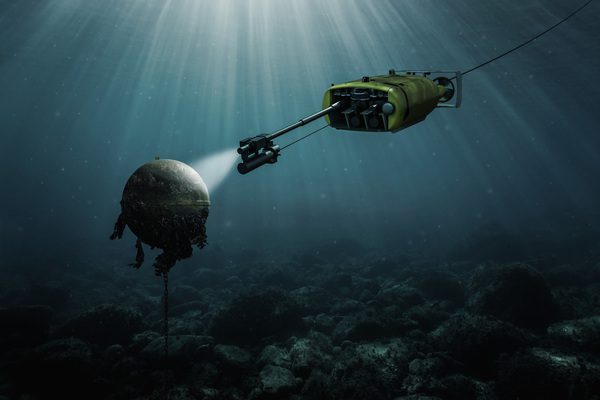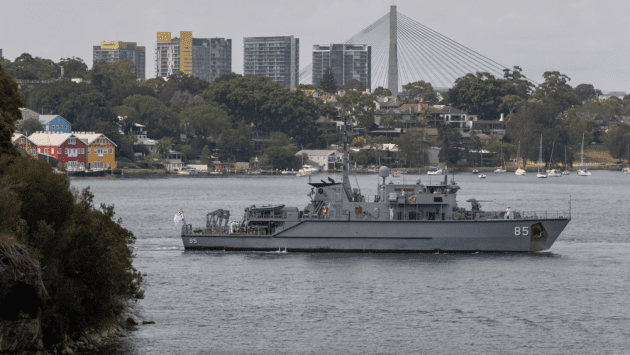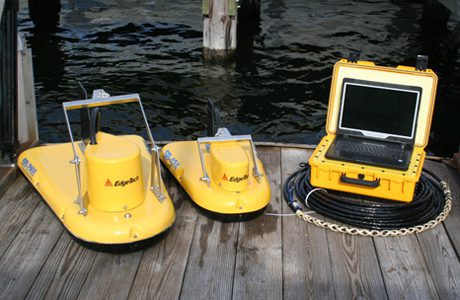Start with the End in Mind
The final stages of Mine Counter Measures (MCM) are the hardest steps and need a strong focus for any Navy to claim a credible MCM capability
There is no doubt that the rapid development of UUV technology shows great promise for revolutionising the first two stages of MCM: search and classification of seabed objects.
For search a UUV can be used to scan a large seabed area autonomously and rapidly with no risk to manned assets. Search and classification can be conducted covertly, and the use of modern side scan sonars enables wide search area swathes and gathering of data to support classification.
The final two stages of identification and disposal are tightly connected. Current doctrine requires a mine to be positively identified using a Remotely Operated Vehicle (ROV) mounted camera before deploying a disposal charge.
The identification stage is very challenging for UUV technology. Identification of seabed objects as mine or non-mine requires detailed data and imaging of the seabed object, together with advanced processing to identify features that separate man-made objects from natural objects such as rocks and coral outcrops. Automated Target Recognition (ATR) software shows future promise to perform this task in real-time while operating on an embedded computer in a UUV.
The final stage of a credible MCM capability is disposal (destruction). Any plans that rely on an option to avoid a minefield will ultimately be doomed to failure. Opposition forces make their own assessments of areas that are sensitive to minefields, and will no doubt select straits and passages that are unavoidable for a naval force wishing to shape the maritime environment through freedom of navigation. Mine warfare is likely to be a feature of any ‘grey’ conflict and the location of minefields (or even the threat of mining) will be selected to cause the maximum inconvenience to naval and civil maritime movements. A naval force that aims to shape their region of interest must have a credible and reliable ‘all-weather’ capability for mine disposal.
Modern Mine Disposal Methods
Divers are one option for mine disposal but are not discussed further in this article as their capability is highly specialised and limited by diver endurance, weather, and diver depths. Diving operations clearly place personnel at extreme risk.
Modern mine disposal relies on the capability of ROVs. Essentially these vehicles are underwater drones that are operated by a pilot from the surface. Automated guidance systems can assist with piloting an ROV from launch to the mine location, however, just like aerial drones a pilot is required for much of the mission to exercise positive control over the vehicle. In the final stage of identification and disposal a pilot enables visual identification, real-time control and precise manoeuvring when near to a seabed contact.
No Guided Weapons
There are no ‘guided weapons’ in mine clearance. A missile-age navy may wish for a point-and-shoot mine destruction capability, but this does not exist in practice. Torpedoes may be one example of this in the underwater battlespace, however, the target location and homing capability of a torpedo cannot be used in the same way to locate and destroy the very small target signature exhibited by a seabed mine.
One-shot mine disposal systems are a capability that was deployed in the Gulf conflicts and showed some capability in the low current and shallow water conditions there. The one-shot model is superficially attractive in that the ROV is more-or-less a human-piloted bomb on a one-way mission to the seabed contact. The trade-off for the one-time use is that sensors on the one-shot must be kept low cost, resulting in very low-quality data that can be used to make the final identification of the mine-like object on the seabed. The net result is that many rocks can be destroyed with limited intelligence gathered on the reality of what was on the seabed and who might have deployed it. One-shot, battery powered, systems are limited in endurance and thrust, and their range and manoeuvrability will be a restrictive factor in the likely areas of operation in seas to Australia’s north.
Multi-shot Systems
Multi-shot Systems such as the Saab Multi-Shot Mine Neutralisation System (MuMNS) are the next step for effective mine destruction, combining high-quality identification and assured destruction with the additional benefit of increased clearance rate. A powerful ROV is launched from a ship, or Unmanned Surface Vessel, with the capability to operate beyond the mine damage radius and to manoeuvre in strong currents and tides that are commonly encountered in tropical seas and littorals. The ROV pilot has the control authority to manoeuvre with precision near to the mine like object and high-quality sensors that enable positive identification and gathering of valuable intelligence data. Finally, a powerful disposal charge is deployed very accurately assuring sympathetic destruction on detonation. Multiple disposal charges can be deployed in one mission with the destruction timed as required for tactical needs.
Multi-shot Systems are the future of credible mine disposal and are ideally suited to the harsh environmental conditions of Australis’s maritime interests. Multi-shot Systems are the effective endgame for the MCM challenge and navies need to effectively incorporate them into future fleet plans.
Read More: Start With The End In Mind




